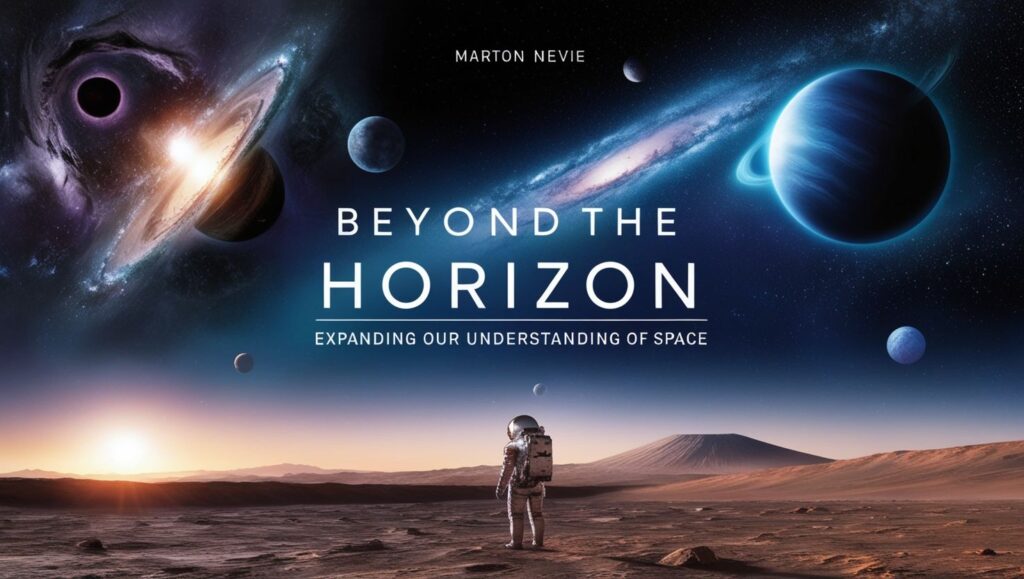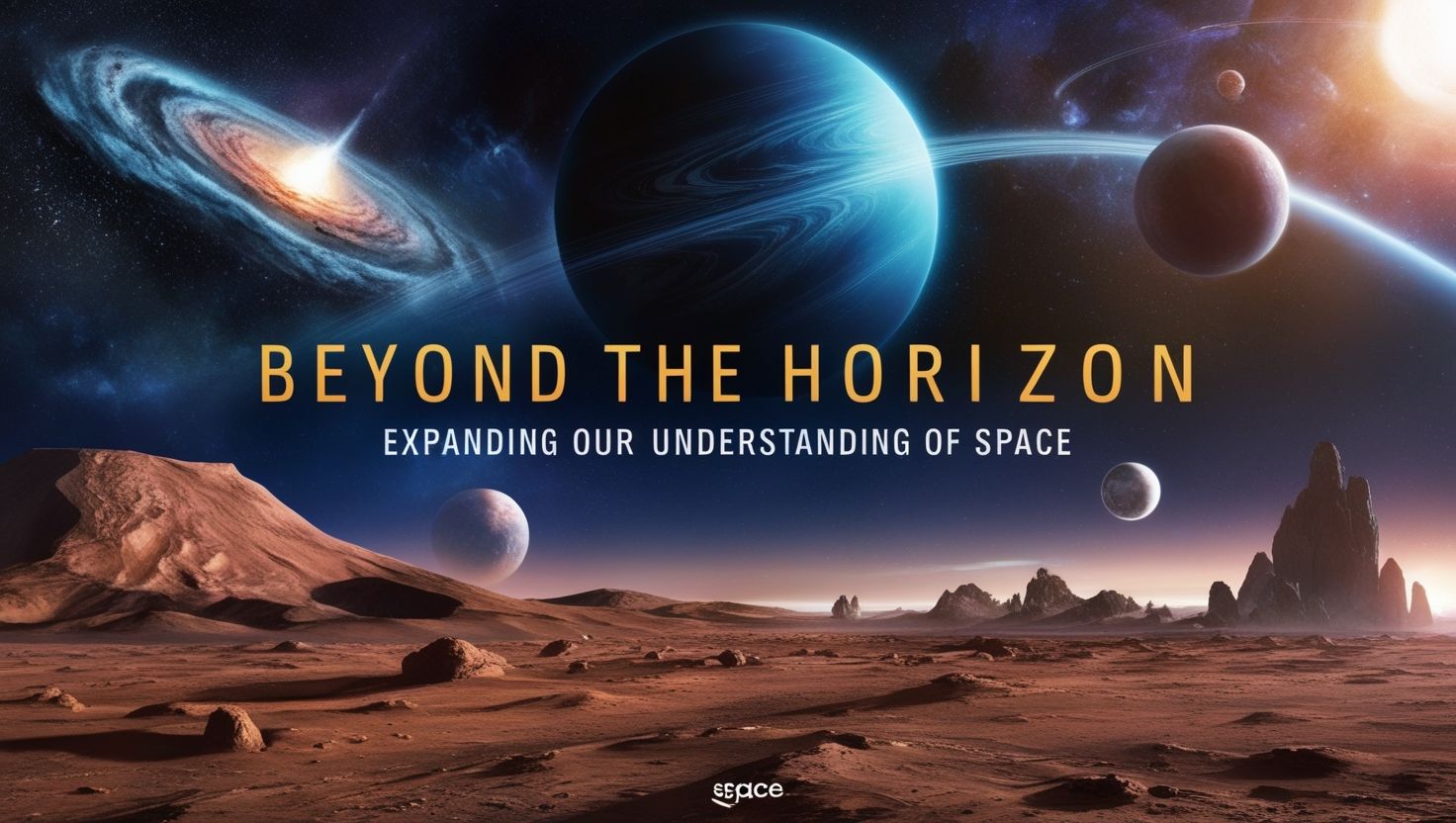Introduction
Beyond the Horizon Understanding of Space, Space, the vast unknown, has captivated humanity for centuries. From ancient astronomers who observed stars with the naked eye to today’s advanced telescopes that capture the universe’s edges, our journey in space exploration reflects humanity’s innate curiosity. This article delves into the fundamental mysteries of space, recent discoveries in exoplanet research and black holes, the pursuit of extraterrestrial life, and the potential future of human settlement beyond Earth.
The Evolution of Our Understanding of Space
Our knowledge of space has expanded dramatically in the past few decades. Telescopes like the Hubble and James Webb have enabled us to see distant galaxies, and the technology used in space exploration has evolved exponentially. Historically, early astronomers like Galileo changed the course of scientific discovery with their revolutionary observations of celestial bodies. Today, we use space-based telescopes to gather data beyond our galaxy, capturing light from billions of years ago and unlocking the universe’s secrets.
Major Technological Advances
The development of advanced telescopes and space probes has allowed us to observe cosmic phenomena in unprecedented detail. The Hubble Space Telescope, for example, has provided over three decades of insight into deep space, capturing spectacular images of galaxies and nebulae. Now, the James Webb Space Telescope, with its powerful infrared capabilities, can penetrate dust clouds and observe the formation of stars and planets that were previously obscured. These instruments have fueled the discoveries of countless stars, exoplanets, and cosmic phenomena.
The Mysteries of Black Holes and Dark Matter
Black holes are some of the most enigmatic objects in the cosmos. With their intense gravitational pull, they absorb anything that comes too close, even light. In 2019, the Event Horizon Telescope (EHT) collaboration released the first-ever image of a black hole in the galaxy M87, marking a milestone in astrophysics. Black holes stretch the limits of our understanding of physics, with their singularities defying current theories about space and time.
Dark Matter and Dark Energy
Aside from black holes, scientists have identified two other mysteries: dark matter and dark energy. Dark matter, which does not emit or interact with electromagnetic radiation, makes up roughly 27% of the universe’s mass and energy content. Dark energy, a mysterious force driving the universe’s accelerated expansion, accounts for about 68%. Together, these components make up 95% of the universe, leaving us with only a small fraction composed of known matter. The study of dark matter and dark energy is a growing field, and unraveling these mysteries is essential for understanding the universe’s future.
The Search for Exoplanets and Potential Life
The discovery of exoplanets—planets that orbit stars outside our solar system—has revolutionized our understanding of potential life beyond Earth. In 1995, astronomers discovered the first exoplanet orbiting a Sun-like star, and since then, over 5,000 exoplanets have been identified, with many existing within the “habitable zone” where liquid water might exist. Tools like the Kepler Space Telescope and the Transiting Exoplanet Survey Satellite (TESS) have made it possible to discover planets by observing the tiny dips in light as they pass in front of their host stars.
Habitable Zones and Extraterrestrial Life
Planets within a star’s habitable zone, sometimes referred to as the “Goldilocks zone,” have temperatures that could potentially allow for liquid water. One notable discovery is Proxima Centauri b, a planet orbiting our nearest stellar neighbor that exists within the habitable zone. Other planets, such as those in the TRAPPIST-1 system, also present exciting possibilities for life beyond our solar system. As technology advances, missions like the James Webb Space Telescope aim to study these planets’ atmospheres, searching for biosignatures—chemical markers that may indicate life.
Mars: Humanity’s Next Frontier
Mars has long been considered the most viable planet for human colonization due to its proximity and relatively similar conditions to Earth. Space agencies like NASA and private companies like SpaceX are investing in plans to establish a human presence on Mars within the coming decades. NASA’s Artemis program, which aims to return humans to the Moon as a stepping stone to Mars, and SpaceX’s Starship program represent major advancements in this effort.
Challenges and Benefits of Mars Colonization
Colonizing Mars, however, presents significant challenges. The Martian atmosphere is thin and composed mostly of carbon dioxide, requiring advanced life-support systems. The journey itself poses health risks due to cosmic radiation and prolonged isolation. However, establishing a colony on Mars would also have profound scientific value, enabling researchers to study the planet’s history and search for signs of ancient life. Mars could be humanity’s first step toward becoming an interplanetary species.

The Role of Artificial Intelligence and Robotics in Exploration
Artificial intelligence (AI) and robotics are transforming space exploration. From the Mars rovers to autonomous navigation systems, AI plays a critical role in operating spacecraft, processing vast amounts of data, and enhancing decision-making in real-time. For example, the Perseverance rover, equipped with AI and advanced robotics, can autonomously navigate the Martian terrain and analyze soil samples, paving the way for more complex robotic missions.
Future Prospects with AI
As space exploration moves further from Earth, AI’s role will become even more significant. Autonomous robots could be sent on long-duration missions to explore distant moons and planets, collecting data that would otherwise be challenging to obtain. In the future, AI may even assist in building habitats on the Moon or Mars, enabling human settlers to survive in these harsh environments.
The Search for Extraterrestrial Life
The search for extraterrestrial intelligence (SETI) has been a key interest in space science for decades. SETI researchers scan for signals from potential alien civilizations using radio telescopes, searching for patterns that suggest intentional communication. Recently, new methods have emerged, such as searching for “technosignatures” like industrial pollutants in exoplanet atmospheres, which could indicate technologically advanced civilizations.
New Discoveries and Ongoing Efforts
In 2020, scientists discovered a molecule called phosphine in Venus’s atmosphere, which some researchers suggested could be a biosignature. Although controversial, such discoveries highlight the potential for finding life in unexpected places. Future missions may focus on Europa and Enceladus, moons of Jupiter and Saturn, where subsurface oceans could harbor microbial life. The search for extraterrestrial life remains one of the most exciting areas of space exploration, potentially answering one of humanity’s oldest questions: Are we alone?
Conclusion
Space exploration continues to push the boundaries of what we know about the universe. From understanding black holes and dark matter to the pursuit of life on other planets, each discovery leads to new questions. The search for exoplanets, the goal of Mars colonization, and advancements in AI are bringing us closer to the stars. As technology advances, so does our capacity to answer fundamental questions about the universe. Humanity’s curiosity will undoubtedly drive us to explore, discover, and expand our presence beyond Earth, with each step revealing more about our place in the cosmos.
References
- NASA. “Hubble Space Telescope.” NASA, 2024.
- Event Horizon Telescope Collaboration. “First Image of a Black Hole.” Astrophysical Journal Letters, 2019.
- SETI Institute. “The Search for Extraterrestrial Intelligence.” SETI, 2023.
- European Southern Observatory. “Exoplanet Discoveries with TESS and Kepler.” ESO, 2022.
- SpaceX. “Mars Colonization Program.” SpaceX, 2023.
- Scientific American. “The Role of AI in Space Exploration.” Scientific American, 2022.
- Astrophysical Journal. “Dark Matter and Dark Energy in the Universe.” Astrophysical Journal, 2021.

5 thoughts on “Beyond the Horizon Understanding of Space”
Comments are closed.